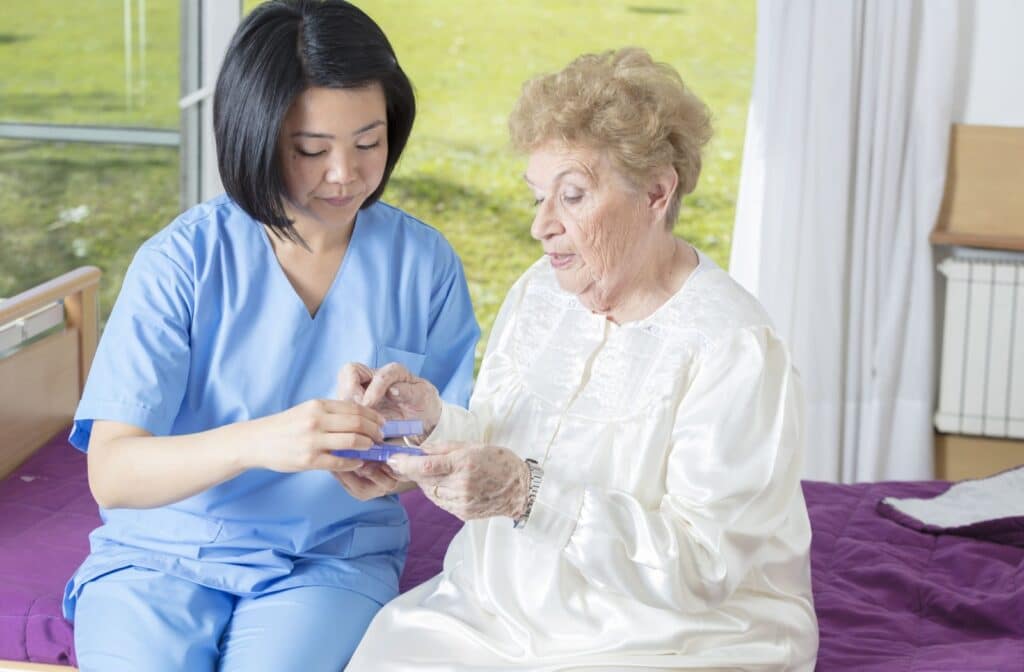What Do Seniors Like Most About Assisted Living?
Key Takeaways
- Assisted living eliminates home maintenance stress while preserving personal independence
- Built-in social communities help combat loneliness and create lasting friendships
- Professional meal preparation and housekeeping services free up time for enjoyable activities
- 24/7 staff availability provides safety and peace of mind for residents and families
- Personalized care plans adapt to changing needs while maintaining dignity and choice
Moving into assisted living is a meaningful life transition, and it’s natural to wonder what day-to-day life is really like in these communities. Many seniors and families share concerns about adjustment, happiness, and whether the experience will truly feel like home. It may be beneficial to learn to differentiate between assisted living, senior housing, and other personal care options.
What residents often discover is a lifestyle that feels lighter, more connected, and more fulfilling. With daily responsibilities taken care of and support available when needed, seniors gain more time and energy for socializing, hobbies, and activities that bring joy. The balance of independence and services offered creates an environment where residents feel supported without feeling restricted, allowing them to live with confidence, comfort, and purpose.
What Are The Main Reasons Seniors Enjoy Assisted Living?
While every resident’s experience is unique, there are common themes that come up again and again when seniors talk about what they value most. From daily convenience to deeper social connection, these benefits often shape a more enjoyable and fulfilling way of life.
Freedom from Home Maintenance and Daily Chores
You no longer need to worry about fixing a leaky faucet at midnight or finding someone to shovel the driveway after a snowstorm. Assisted living communities handle all home maintenance tasks, from lawn care to appliance repairs.
Housekeeping services take care of cleaning and laundry, giving you hours back in your week. Instead of spending Saturday morning doing chores, you can join a book club, take a painting class, or simply relax with a cup of coffee.
This freedom creates space for activities that bring joy rather than stress. Many residents discover hobbies they never had time for or reconnect with interests they’d set aside during their busier years. Staying physically active becomes much easier when you’re not exhausted from household tasks.
New Friendships and Social Connections

Assisted living communities create natural opportunities for social interaction that can be hard to find when living alone. You’ll share meals with neighbors, participate in group activities, and bump into familiar faces in common areas throughout the day.
These interactions often develop into meaningful friendships. Residents frequently mention how much they enjoy having people to talk with who understand their experiences and share similar life stages. Research confirms that regular social interactions significantly boost happiness and well-being.
The built-in social network helps combat the loneliness that many people experience when living independently. Instead of going days without meaningful conversation, you’ll have regular opportunities to connect with others who genuinely care about your well-being. Small senior living communities often foster especially close relationships among residents.
Delicious Meals Without the Work
Professional kitchen staff prepare home-cooked meals daily, eliminating the need for grocery shopping, meal planning, and cooking. You can enjoy nutritious, varied meals without any of the preparation work.
Dining becomes a social experience rather than a solitary task. You’ll share meals with friends and neighbors, creating natural conversation opportunities and building relationships over good food. Mental well-being improves when meals become enjoyable social events rather than isolated routines.
Many residents appreciate having multiple meal options available and not having to worry about whether they’re eating well. The relief from meal planning and kitchen cleanup gives you more energy for activities you actually enjoy.
Engaging Activities and Programs
Communities offer regular programming designed around resident interests and abilities. You might find exercise classes adapted for different mobility levels, creative workshops, educational presentations, or musical performances.
These activities provide structure to your days while offering choices about how to spend your time. You can participate in what interests you and skip what doesn’t, maintaining control over your schedule. Creative activities particularly benefit older adults by reducing loneliness and enhancing social connections.
Many residents discover new talents or rediscover old passions through community programming. The variety helps prevent boredom and keeps your mind and body active in ways that feel enjoyable rather than forced. Well-designed programs focus on individual interests and capabilities.
How Norbella Senior Living at Savage Creates These Experiences
Norbella Senior Living at Savage offers an intimate community setting where residents receive personalized attention in a warm, home-like environment. The team focuses on helping each person maintain their independence while providing the support they need to thrive.
The community’s approach emphasizes individual choice and personal preferences, allowing residents to shape their daily experiences according to what matters most to them. This personalized focus helps create a true sense of home rather than an institutional feeling. Regular physical activity becomes safer when you have supportive environments and staff guidance.
If you’re considering assisted living options for yourself or a loved one, Norbella Senior Living at Savage invites you to visit and see firsthand how their approach to senior care can enhance daily life. Schedule a tour to explore the community and learn more about how they support residents in living their most fulfilling lives.


















